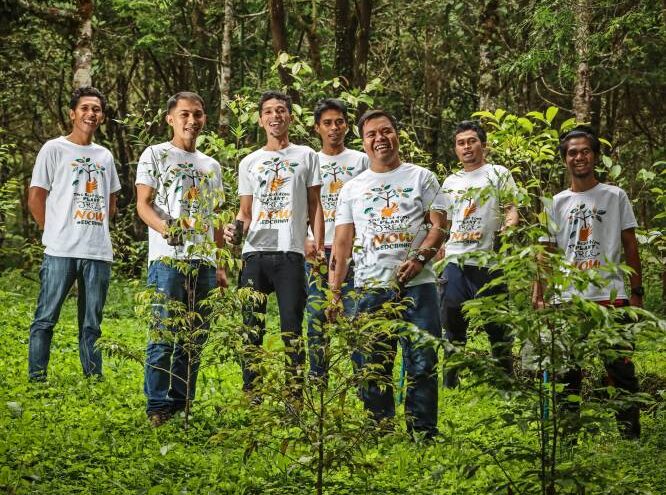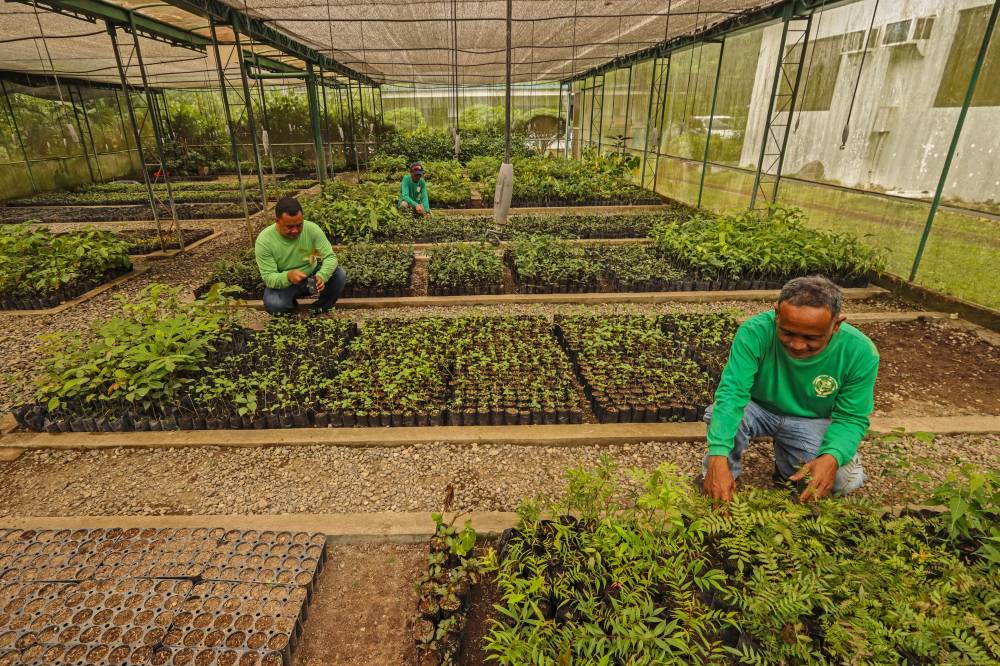Binhi is no ‘islang pantropiko,’ but still that important

As the Philippines braces for more and stronger typhoons, an initiative that started in 2008 has renewed its vow to revive forests across the country, fortifying Filipinos’ first line of defense against natural disasters.
Dubbed the “largest” private sector-led forest restoration initiative in the Philippines, Energy Development Corp.’s (EDC) Binhi Program was initially meant to manage geothermal reservations, covering about 1 percent of the country’s total land area.
“These reservations need a good forest cover as it needs to continuously balance water recharge to sustain business operations,” Ronino Gibe, corporate relations head and Binhi Program head, tells Inquirer.
EDC, a subsidiary of Lopez-led First Gen, is considered the world’s largest vertically integrated geothermal firm. It operates facilities in Leyte, Bicol, southern Negros and North Cotabato, with 1,185 megawatts of installed capacity.

Beyond business
Realizing that the effort should not end in bringing back forests to life, the program has been planting—not just seedlings—but also hope in several communities nationwide.
Three years into the project, EDC has expanded reforestation efforts outside project sites. To make this happen, it teamed up with the Department of Environment and Natural Resources (DENR) under the National Greening Program.
Binhi has so far helped revive about 10,240 hectares of “denuded” forest lands across the Philippines, planting nearly 7 million seedlings.
Forest denudation refers to a forest that has been stripped of some or most of the trees it needed to continue existing.

Excessive logging is one of the main causes of denudation, which can increase the occurrence of landslides, affecting nearby communities.
Not a universal approach
Every goal comes with difficulties. And Gibe shares that saving forests does not only revolve around just planting trees.
The official stressed that careful planning is a must in ensuring its long-term success, especially in choosing the right species for specific areas.
Selecting the wrong ones could exhaust nutrients, degrade soil quality and fail to cater to the needs of local organisms. Instead of increasing biodiversity, poor choices may even lead to futile restoration efforts.
“We emphasize the employment of customized strategies and not one-size-fits-all strategies. We craft our plans, strategies, and approaches differently to suit the local conditions. That includes the choice of species and planting strategies,” he says.

Gibe says EDC’s target through the Binhi program is “to build a forest and not just a three-year-old plantation.”
“We aim to improve the ecosystem services in the area, and increase biodiversity and we can achieve these when we have restored the degraded forests,” he says.
One crucial step to sustaining the project’s momentum is to secure communities’ backing.
Community involvement
Lack of ownership and support of Filipinos residing near the forests could also be the culprit why reforestation works often go to waste.
But Gibe acknowledges that land availability is an issue, especially if communities solely rely on agriculture to earn and get by.
While sometimes insufficient, farming can provide food on the table. Reforestation, on the other hand, takes years to realize its economic benefits.
“Learning from previous reforestation efforts in the country, after the many reforestation projects ended, these areas returned to their degraded state because the farmers have no other alternatives but to use these areas for short-term crops,” Gibe says.

“That’s why our Binhi goes beyond these learning and we create livelihood and transform them into social enterprises so these farmers will not harm the restored areas but rather nurture them because they are now providing their natural capital to run their livelihoods,” he adds.
Harvests of opportunities
Gibe boasts that some members of organized farmer groups who were previously “kaingineros” are now “protectors of the forest.” Kaingineros are individuals who do “kaingin,” a traditional form of creating fields for crops by cutting down and burning trees.
He says these community members now serve as partners for forest patrol or forest protection.
The Binhi program has also enticed farmers to be involved in seedling production and forest restoration activities to maintain trees planted for three to five years.
“[We] also created social enterprise projects, like coffee products, across all sites benefiting the protection of existing forest while generating income to sustain their livelihood,” Gibe says.
The EDC official says the firm maintains its commitment to actively explore ways to cushion the impact of climate change on Filipino communities.
“It will be scaled up in terms of targets in restoration areas and biodiversity conservation benefiting both humans and the environment,” Gibe adds.





















